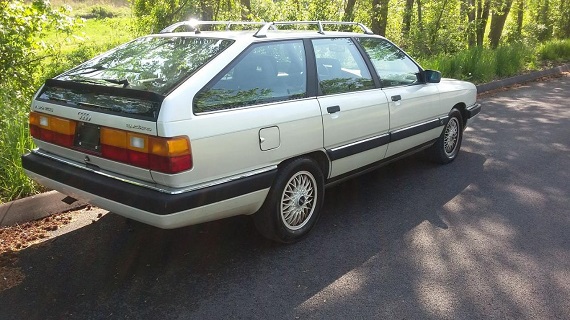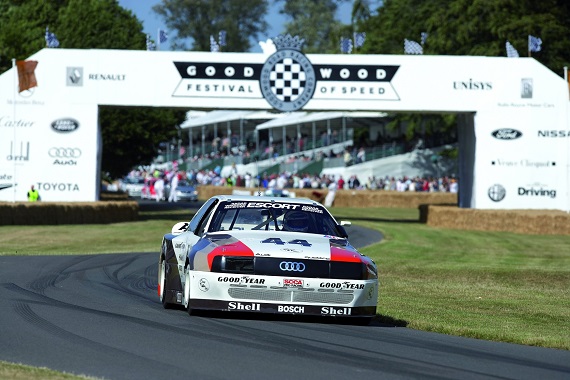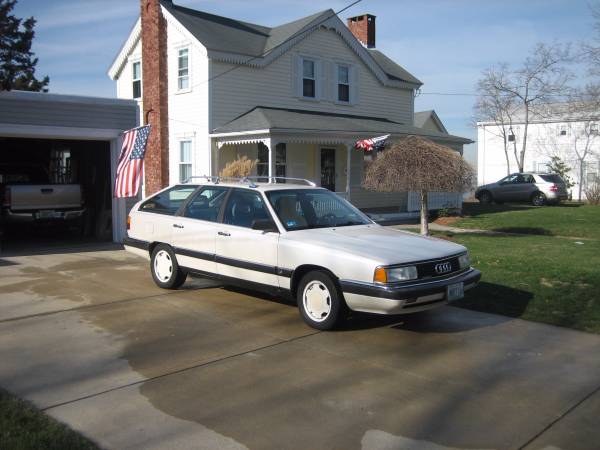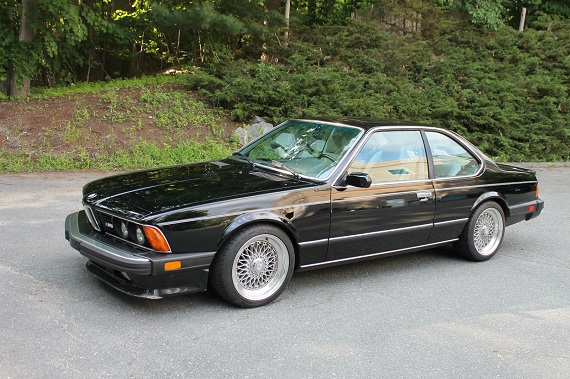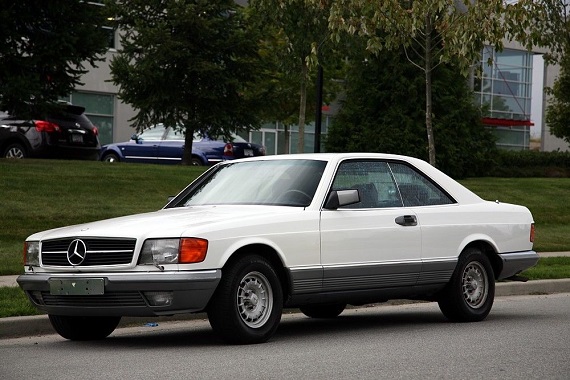Although the C3 Audi chassis enjoyed a reasonably long production run of 1984-1991, each year introduced changes that, while evolutionary, were notable and make each specific model year feel a little bit bespoke. The biggest change was the 1986 introduction of Audi’s all-wheel drive system of quattro to the large model range, making three distinct packages you could get the unique drivetrain in the luxury market. In the U.S. market, 1986 5000 quattros came only in “CS” spec and sedan – basically, fully loaded with only heated seats, Fuchs forged wheels and Pearlescent White Metallic paint as options. 1987 opened the options, but not with more gadgetry – the Avant, previously only available in front drive normally aspirated “S” form, joined the quattro lineup full time after being introduced about halfway through the 1986 model run. Alcantara also became a seldom-selected option. 1988 saw a very minor revision to the turbocharged “CS” models with new script badges in the rear and a few more options including heating for the rear seats and Velour interior options, but the big news was a new “5000S quattro” model, which came sans turbo and without the twin-bulb headlights, but shared the big brother turbo brakes and wheels. It was a smart move to drop the price on the quattro models, as the normal run 5000 reported outsold the 5000CS quattro by a measure of 4:1! 1989 was highlighted by a complete model refresh, moving to the European “100/200″ model designations. Accompanying the change were some new colors and minor alterations, such as more upscale-looking 15″x6” BBS wheels (color matched on Pearlescent White Metallic examples, just as the aero and Fuchs wheels had been). But inside an entirely new sweeping dashboard setup would be the standard on big Audis for the next 7 years. Instead of the previously confusing “S/CS” monikers, turbocharged models now wore the 200 badge, while normally aspirated models were 100s. The Alcantara and Velour options disappeared on the 200 models, which came only fully-loaded, and Fuchs were no longer an option. The 100 quattro shared many components with the 80/90 quattros from the same time, including the NG normally aspirated motor instead of the turbocharged MC1. 100s also ran the familiar small-chassis 4×108 bolt pattern with accompanying smaller brakes, but oldly Audi commissioned BBS to make a run of 15″x6″ wheels that matched the look of the 200’s wheels outwardly. Mechanically, otherwise there were few changes to either model, though as with the 80/90 quattros, the option to lock your own differential was now limited to the rear, and then speed limited to 15 m.p.h.. While 1990 saw few changes to the run overall, there was a change in motor in the 200. A rolling change saw the revised (and very short lived) MC2 replace the MC1. Twin knock sensors allowed engineers to run higher compression; coupled with a reground camshaft, lighter mass flywheel and smaller K24 turbo meant that the MC2 could run less boost and spool more quickly for a better driving experience, but ultimately the facts and figures say the power was unchanged. As always, top of the heap was the 200 quattro Avant, and they didn’t get any more expensive than when optioned with the Pearlescent White Metallic paint:
Tag: C3
One of the things I love the most about Audi is that for some time they liked to do things differently. Now, if you’re Porsche and you’re able to build a reputation around that insistence to do things differently through racing, then you can be a successful company. As such, the closely linked cousin Audi was taken racing by some of the same team from Porsche. The first big attempt in the 1980s was the push to win the World Rally Championship with their new Quattro model. Highlighting turbocharged technology coupled with a semi-revolutionary all-wheel drive system, the Quattro was a positive sensation until the mid-1980s and the death of Group B. Audi then took on Group A with the non-turbo Coupe quattro briefly, and also enjoyed some unlikely success rallying with their 200 sedan. But even success in World Rally Championship events wasn’t enough of a reputation boost for what lay ahead of Audi next, as 60 Minutes highhandedly nearly took the company right out of the marketplace. In order to rebuild the reputation of the company in the U.S., Quattro guru Jo Hoppen convinced Audi to go racing in the SCCA Trans-Am series. Headlining that series were tube-frame V8 behemoths that outwardly laughed as a production based luxury sedan with a measly 2.1 turbocharged inline-5 hanging way out the front pulled up to grid. It turned out they didn’t laugh too long:

